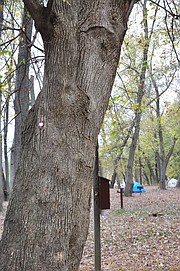To the Editor:
1) Where can the documented risk assessment be found that is driving the extensive cutting? It isn't just three sites noted in the press release. Cutting down large trees is occurring throughout the park. What is the criteria for removal?
2) The C&O Canal NHP has long relied on Canal organizations to provide maintenance and monitoring of the park. Such widespread assistance by individual group members creates personal investment. A sense of belonging. Why weren't these groups alerted to decisions to engage in cutting? It seems very poor public relations to exclude them.
3) Is there a contractor? Or, is park staff doing the cutting? Where is the money coming from to pay for this work?
4) A change of policy toward park natural resources would seem to warrant public hearing. The proposed changes in fee structure included such a process. Why not here? Especially when the tree cutting may include older/specimen trees and forest needed to hold soil and prevent erosion.
Environmental Issues
1) The C&O Canal NHP contains some County, State and National Champion trees. Are they being considered and their value weighed against risk? Silver Maples seem to have been targeted by the cutting. The County Champion Silver Maple (Acer saccharinum) is located at Lock 26. A wing of General Lee's Army marched past it in the Civil War. So did J.E.B. Stuart's cavalry. This tree is a destination for many and an individual historic treasure. Is it too in jeopardy? What of the largest tree in Maryland An American Sycamore located on the banks of the Potomac at Dickerson?
2) Arborists are not the only “experts” that should be consulted. Ecologists recognize the value of forest in protecting individual trees from wind damage. Taking out a significant number leads to higher risk to those remaining. Also, a number of trees at Swain's marked for cutting overhang the river and of little risk to humans. Yet they intercept ice plates in winter and their roots hold bank soil and prevent erosion from flooding common on the Potomac River.
3) Where is the broader assessment of arborist findings in relationship to the impending loss of significant natural resources? There is an ISA standardized process for risk assessment of trees with a form that should be filled out for each tree as part of the ISA supported process. Typically, prior to any action taken, a report of findings is written. In the experience of many arborists, it is never acceptable to make removal decisions on high value trees without going through a risk assessment process. Is there any control over arborist decisions?
4) It seems clear the NPS has underestimated the extent of concern and value park
users place on trees. More importantly, the lack of a transparent process has led to
mistrust. Many consider the park a safe place in the sense that it is free of the
incursions they endure outside the park. (Witness Donald Trump's “stump” desert
golf course just across the Potomac River or Pepco's rampant destruction on
roadsides and even private property.)
5) We request an extended halt to consider a more sensible approach. We can agree that at Swains and elsewhere, some trees need to be removed for reasons of health but we ask for a more conservative evaluation of individuals slated for removal. ( e.g. if all the trees that are scheduled to be cut down were sorted from worst to best, why not take out the riskiest ones but leave the better ones) Finally, any trees removed should be replaced with appropriate replanting.
Ginny Barnes
Environmental Chair
West Montgomery County Citizens Association
www.wmcca.org
